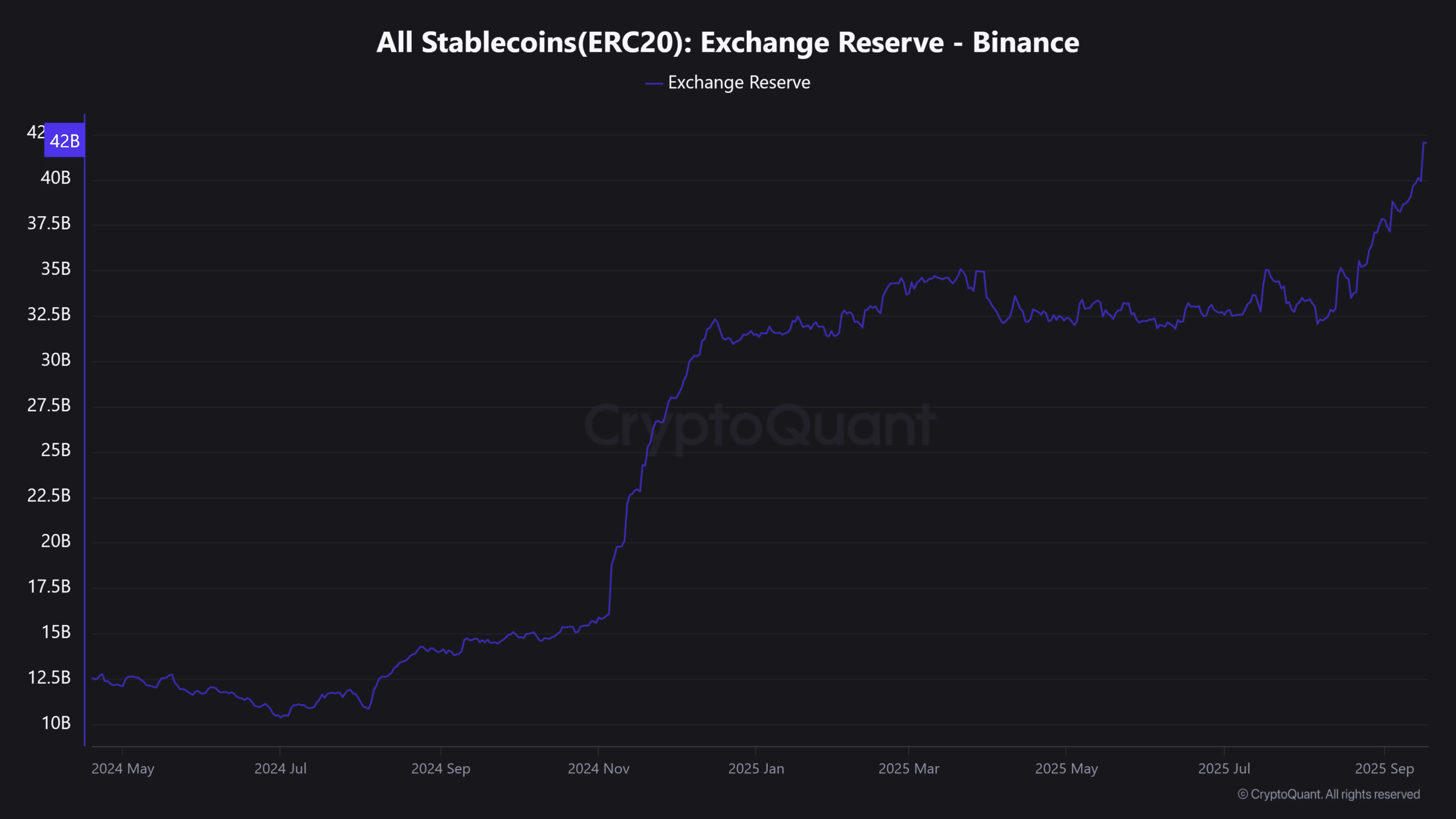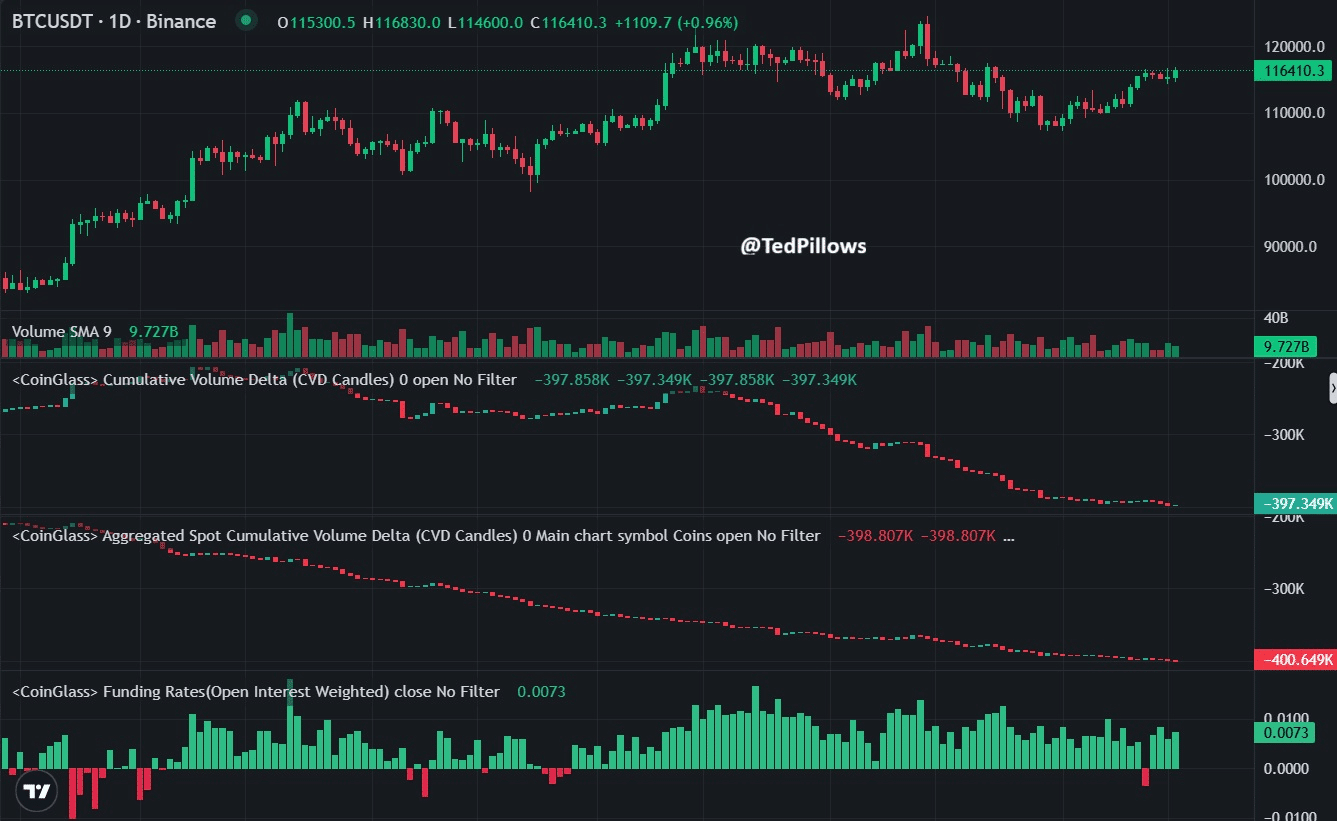Bitcoin volatility is likely to spike after the FOMC as Binance’s record $42B stablecoin reserves and a recent $3B USDT issuance are fueling leveraged perp flows while spot buying remains weak, creating a fragile rally that could reverse quickly if perps unwind.
-
Binance has amassed $42B in stablecoin reserves, acting as large latent liquidity that can amplify BTC moves.
-
Spot cumulative volume delta (CVD) shows weak buying, while perps attract leverage — a divergence that increases short-term risk.
-
Recent flows: $3B USDT issuance and $5B inflows to Binance in September, signaling concentrated liquidity buildup.
Bitcoin volatility likely to spike post-FOMC as Binance stablecoin reserves hit $42B; read actionable insights and prepare your positions now.
What is driving Bitcoin’s post-FOMC volatility?
Bitcoin volatility is being driven by a rotation of liquidity into perpetual futures while spot buyers remain sidelined. Large stablecoin reserves on exchanges—notably a $42 billion pile on Binance—and fresh USDT issuance create the fuel for rapid, leveraged moves around macro events like the FOMC.
How are Binance’s stablecoin reserves influencing BTC moves?
Binance’s exchange stablecoin balance has climbed to an all-time high of $42 billion, with $10B+ accumulated in 2025 so far. September alone recorded roughly $5 billion in inflows, and Tether issued about $3 billion in the past four days.
That combination acts as dry powder: it can either absorb selling or provide base funding for large, leveraged purchases. Market data providers cited include CryptoQuant and Coinalyze as sources for reserve and CVD metrics.
Why is Bitcoin’s post-FOMC volatility expected to spike?
Liquidity is rotating into Bitcoin perpetuals while spot buyers stay sidelined, creating a leveraged, fragile rally. Spot CVD hit a multi-month low (-397.3k), indicating retail and institutional spot demand is muted despite price strength.
What does the spot vs. perp divergence mean for traders?
When perps dominate a rally, funding rates and leverage amplify directional moves. If perp positions unwind quickly, liquidation cascades can trigger sharp retracements. Traders should watch funding rates, open interest, and exchange stablecoin balances as leading indicators.

Source: CryptoQuant
In November 2024, Binance increased stablecoin reserves from $18B to $32B as BTC rallied ~54.3% toward a then-high of $108,000. The pattern—reserves growing alongside major BTC rallies—supports the thesis that exchange liquidity stacks can precede large directional moves.
Bitcoin volatility ahead as spot and perps diverge
Since the late-August drop to $107k, BTC formed lower lows but sparked bullish rebounds through key resistances. That structure suggests momentum exists, but the underpinning liquidity is skewed toward derivatives, not spot.
Spot CVD has been negative, while perps show rising open interest. If perps dominate and funding turns extreme, a quick deleveraging could send BTC lower in a short timeframe.

Source: Coinalyze
Frequently Asked Questions
Will Binance’s stablecoin reserves trigger a Bitcoin rally?
Not necessarily. Reserves are latent liquidity: they enable rapid moves but do not guarantee price upside. A rally requires the liquidity to be deployed into spot buying; if it stays in perps, volatility increases without sustainable spot demand.
How should traders prepare for post-FOMC Bitcoin volatility?
Prepare by lowering leverage, using defined-risk positions, and watching funding and open interest. Keep exposure size manageable and plan for quick repricing around FOMC announcements.
Key Takeaways
- Stablecoin pile is significant: Binance’s $42B reserve is a major liquidity pool that can amplify BTC moves.
- Perp-led rallies are fragile: Spot CVD weakness vs. rising perp flows increases retracement risk.
- Actionable items: Monitor funding rates, open interest, exchange stablecoin balances, and reduce leverage ahead of the FOMC.
Conclusion
Binance’s rising stablecoin reserves and recent USDT issuance increase the likelihood of pronounced Bitcoin volatility around the FOMC. Traders should treat current strength with caution: perps are fueling the move, spot demand remains light, and a rapid unwind could follow. Stay risk-managed and monitor on-chain and exchange liquidity metrics closely.





